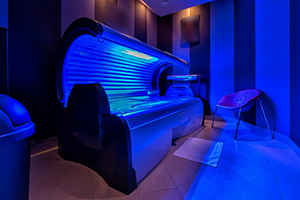In a Norwegian study published by Lergenmuller et al in JAMA Dermatology, researchers found evidence of a dose-response association between lifetime indoor tanning and risk of development of cutaneous squamous cell carcinoma in women. The association was the same regardless of duration of use and age at initiation.

Photo credit: Getty
Methods
The cohort study included data from 159,419 women in the Norwegian Women and Cancer study. Baseline questionnaires were given to participants from 1991 to 2007, with follow-up questionnaires given every 5 to 7 years. The mean age at inclusion was 49.9 years old. Participants were asked about indoor tanning use and pigmentation characteristics, as well as sunburns, sunbathing vacations, and indoor tanning during childhood, adolescence, and adulthood. Women with very dark skin, prevalent cutaneous squamous cell carcinoma, and cutaneous melanoma were excluded from the study cohort.
Results
The mean follow-up was 16.5 years. During that time, 597 women were diagnosed with cutaneous squamous cell carcinoma.
Sixty-nine percent of participants reported ever use of indoor tanning. Risk of development of cutaneous squamous cell carcinoma increased with an increasing cumulative number of indoor tanning sessions—the adjusted hazard ratio (HR) for highest use vs never use was 1.83 (95% confidence interval [CI] = 1.38–2.42, P <. 001 for trend). Women who had used indoor tanning for 10 years or less, more than 10 years, and who had initiated use at either 30 years old or older or younger than 30 years old were all more likely to develop cutaneous squamous cell carcinoma vs never users. There was no significant interaction between cumulative indoor tanning and age at initiation (P =.82 for interaction). However, there was a significant association between increase in risk and increasing number of indoor and outdoor tanning sessions combined (HR = 2.43; 95% CI = 1.74–3.39 for highest vs lowest category; P < .001 for trend).
The authors concluded, “The findings provide supporting evidence that there is a dose-response association between indoor tanning and cutaneous squamous cell carcinoma risk among women. The association between cumulative exposure to indoor tanning and cutaneous squamous cell carcinoma risk was the same regardless of duration of use and age at initiation. These results support development of policies that regulate indoor tanning.”
Disclosure: For full disclosures of the study authors, visit jamanetwork.com.

